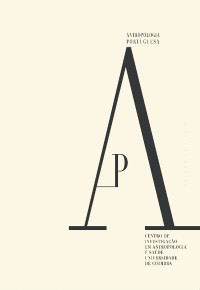Please use this identifier to cite or link to this item:
https://hdl.handle.net/10316.2/47733| Title: | Matzevot kevurah esquecidas: resgate etnoarqueológico do Cemitério Judaico de Gurupá, Pará, Brasil | Other Titles: | Forgotten Matzevot kevurah: ethnoarchaeological research of the Jewish Cemetery in Gurupá, Pará, Brazil | Authors: | Cunha, Claudia Marques, Fernando Fonseca, Diego Benathar, Cássia Farage, Elton Lima, Helena Benchimol, Alegria |
Keywords: | Cemetery;Jewish;Amazon Rubber Boom;ethnoarchaeology;Cemitério;Judeus;Ciclo da Borracha;etnoarqueologia | Issue Date: | 2019 | Publisher: | Imprensa da Universidade de Coimbra | Abstract: | The Jewish Cemetery of Gurupá,
in Pará, Brazil, was used as the burial ground
for the local Jewish community between the
second half of the 19th century to the first
half of the 20th century. Having established
commercial enterprises in the region during
the Amazon Rubber Boom, the community
collapsed along with that market in the early
1900s. After that, immigration of most practicing
Jewish families and the conversion of
the remaining ones to Christianism led to the
abandonment of the space. The meaning of
its headstones was lost as the Hebraic speaking
elderly died. The main objective of this
study was the recovery of information on the
cemetery and on the community it served.
This work consisted of the cleaning of the space and the tombs, data collection and
translation of the dedications on the headstones;
graphic and photographic register of
the space and collection of the oral history
of the place among people living in Gurupá.
Main results included new data on the Funerary
Anthropology of this community and
their struggle to keep their traditions in the
isolation of the Amazon jungle. O Cemitério Judaico de Gurupá, no Pará, esteve em uso entre a segunda metade do século XIX e a primeira metade do século XX como local de sepultamento da comunidade judaica local, estabelecida na região por conta do comércio a retalho que teve seu auge durante o Ciclo da Borracha. Com o fim deste, o êxodo de grande parte das famílias praticantes do judaísmo, a consequente desestruturação desta comunidade e a conversão dos remanescentes ao cristianismo, o cemitério entrou em desuso. As lápides, em sua maioria escritas em hebraico, perderam significado com a morte dos mais velhos ainda falantes do idioma. O trabalho aqui apresentado envolveu a limpeza do espaço cemiterial e dos túmulos, o registro gráfico e fotográfico do espaço, a tradução situadas suas lápides e a recolha de informações orais junto à comunidade com o objetivo de resgatar parte da memória do espaço e da comunidade à qual ele servia. O estudo revelou aspectos inéditos da Antropologia Funerária de uma comunidade judaica na Amazônia e do seu esforço na manutenção das tradições hebraicas apesar do isolamento. |
URI: | https://hdl.handle.net/10316.2/47733 | ISSN: | 0870-0990 2182-7982 (PDF) |
DOI: | 10.14195/2182-7982_36_7 | Rights: | open access |
| Appears in Collections: | Antropologia Portuguesa |
Files in This Item:
| File | Description | Size | Format | |
|---|---|---|---|---|
| matzevot_kevurah_esquecidas__resgate_etnoarqueologico.pdf | 2.83 MB | Adobe PDF |  |
Items in DSpace are protected by copyright, with all rights reserved, unless otherwise indicated.
